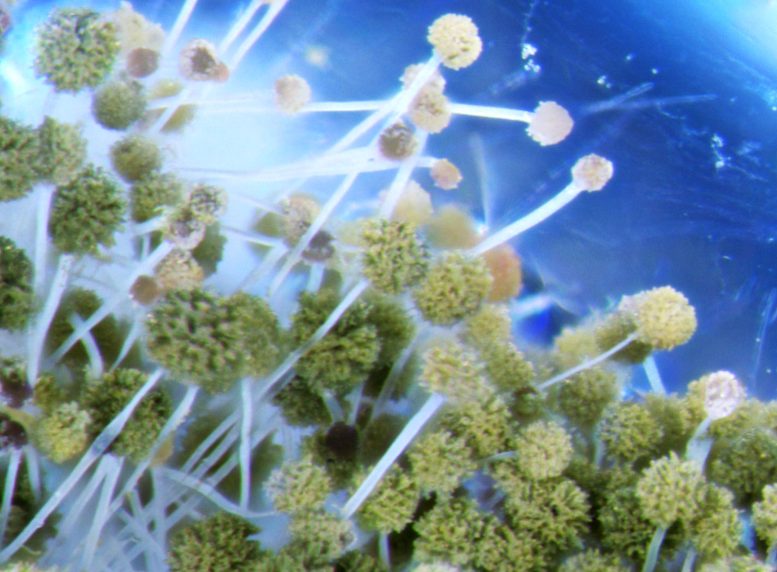Uncovering the Secret Life of Fungi in Bee Colonies

By
Studies reveal Aspergillus flavus’s unique adaptations to thrive in the harsh conditions of bee hives, suggesting a potential symbiotic relationship with bees.
Previous research efforts to catalog the fungal diversity in honey bee colonies have consistently identified Aspergillus flavus as a common presence in hives. The past attempts of honey bee researchers to inventory the fungal diversity in honey bee colonies revealed that Aspergillus flavus is frequently found in hives. In a new study, scientists have discovered that this fungus is uniquely adapted to survive in bee colonies.
The western honey bee, Apis mellifera, stores large quantities of food in the form of bee bread, which serves as the primary nourishment for the colony. This nutrient-rich food source attracts various microorganisms, despite its acidic nature and low moisture content. Additionally, bee bread is coated with propolis, an antimicrobial substance, creating a challenging environment for microbial survival.
Microbial Life in Bee Colonies
Despite the inhospitable nature of bee bread, the microbiome in hives consists of several bacterial and fungal species that are important to honey bee food preparation, storage, and digestion.
“Most of the research on bee bread has been focused on bacteria and it was assumed that fungi didn’t play a big role because the bacteria made it too inhospitable to them,” said Daniel Bush, a graduate student in the Berenbaum (IGOH/GEGC/GNDP) lab. “After talking to mycologists, I suspected that wasn’t the case and I set out to demonstrate that fungi were capable of living successfully in bee bread.”
Research on Fungal Strains
In the study, the researchers used three strains of A. flavus: one that is not found in bee hives, a strain that was isolated from hives in central Illinois, and a pathogenic strain from a honey bee colony that had a stonebrood infection.
They first tested whether the strains showed any differences in their responses to pH and temperature. The latter was looked at because hives are characterized by higher year-round temperatures compared to the outside environments, which is a challenge for many microbes. Although the strains were all able to grow across different temperature ranges, they had visible growth differences under different pH conditions. The strain that was isolated from the hives was able to withstand low pH, while the other two could not.
Adaptation and Genetic Analysis
The strains were also tested under different matric potential, which measures how much moisture is available, and response to propolis. “We saw that the strain from the hive was capable of dealing with extreme levels of environmental pressure from colony-specific sources,” Bush said. “It was interesting that it could deal with propolis, which is believed to have fungicidal properties.”
To better understand how the hive-associated fungal species were able to adapt, the researchers also sequenced the A. flavus strain and found that it had several genetic mutations that allowed it to tolerate the harsh conditions of the bee bread environment.
Ongoing Research and Future Directions
“We believe that these are signs that there is a level of adaptation for the fungus that helps it cohabitate with the bees,” Bush said. “We suspect that there is some mutual benefit to both organisms, but we haven’t found sufficient evidence yet.”
The researchers are now hoping to study how the fungus performs on different compositions of bee bread during their life cycle. They hope that their work will shed light on how fungicides that are routinely used to protect the bee hives will affect these microbes.
Reference: “An Aspergillus flavus strain from bee bread of the Western honey bee (Apis mellifera) displays adaptations to distinctive features of the hive environment” by Daniel S. Bush, Bernarda Calla and May R. Berenbaum, 22 February 2024, Ecology and Evolution.
DOI: 10.1002/ece3.10918
The study was supported by the Agriculture and Food Research Initiative.
